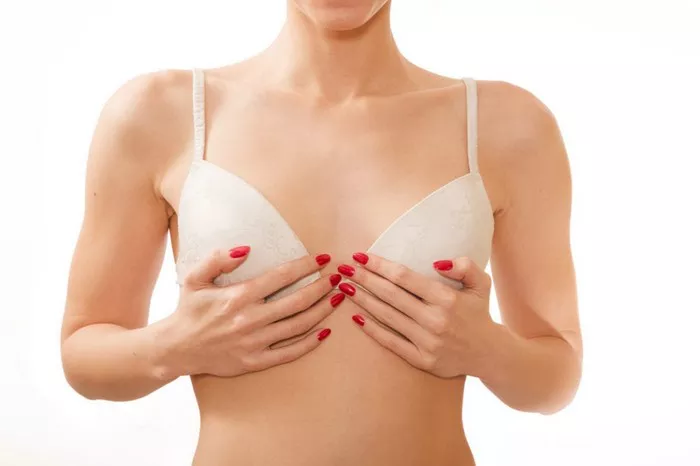Chest wrinkles, often referred to as décolletage wrinkles or cleavage wrinkles, are a common concern for many individuals as they age. These lines and creases that develop on the chest area can be a source of self-consciousness and can be challenging to address. However, there are several effective strategies to minimize and prevent the formation of chest wrinkles. In this comprehensive guide, we will explore the causes of chest wrinkles and provide actionable steps to help you achieve a smoother and more youthful décolletage.
I. Understand the Causes
Before tackling chest wrinkles, it’s essential to understand the factors that contribute to their development:
Aging: As we age, our skin loses elasticity and collagen, making it more prone to wrinkles. The chest area is particularly susceptible due to its exposure to the sun and frequent movement.
Sun Damage: Prolonged sun exposure leads to skin damage, including wrinkles. UV rays can break down collagen and elastin fibers, causing premature aging of the skin on the chest.
Sleep Position: Sleeping on your side can lead to creases and wrinkles on the chest, especially if this position is maintained over extended periods.
Smoking: Smoking can accelerate the aging process of the skin and contribute to the formation of wrinkles, including those on the chest.
Dehydration: Inadequate hydration can result in dry skin, which is more susceptible to developing wrinkles.
II. Prevention Strategies
Preventing chest wrinkles is often more effective than attempting to treat them after they have formed. Here are some preventive measures:
Sun Protection: Use sunscreen with a broad-spectrum SPF of at least 30 on your chest daily, especially if it’s exposed to the sun. Wear protective clothing, such as wide-brimmed hats and cover-ups, when spending time outdoors.
Sleep Position: Try to sleep on your back to reduce pressure on the chest area. Consider using a silk or satin pillowcase to minimize friction.
Hydration: Maintain proper hydration by drinking an adequate amount of water daily. Use a moisturizer on your chest to keep the skin hydrated.
Quit Smoking: If you smoke, quitting can slow down the aging process and help protect your skin from further damage.
III. Topical Treatments
Several topical treatments and skincare products can help improve the appearance of chest wrinkles:
Retinoids: Retinol or prescription-strength retinoids can stimulate collagen production and improve skin texture. Apply them to your chest area as part of your skincare routine.
Antioxidants: Antioxidant-rich creams or serums can help protect the skin from oxidative stress and UV damage.
Peptides: Peptide-containing products may boost collagen production and improve the elasticity of the skin.
Hydrating Creams: Moisturizers with hyaluronic acid or glycerin can provide essential hydration to the chest area.
Exfoliation: Gently exfoliate your chest area once or twice a week to remove dead skin cells and encourage cell turnover.
Vitamin C: Vitamin C serums can help brighten the skin and improve its texture when applied to the chest area.
IV. Medical Treatments
For more severe chest wrinkles, consider these medical treatments:
Chemical Peels: Chemical peels can remove damaged skin cells and promote collagen production, resulting in smoother skin.
Laser Therapy: Laser treatments, such as fractional laser or intense pulsed light (IPL), can target chest wrinkles and stimulate collagen growth.
Microdermabrasion: This procedure exfoliates the skin’s top layer, reducing the appearance of wrinkles and promoting a more youthful appearance.
Dermal Fillers: Injectable fillers like hyaluronic acid can temporarily fill in chest wrinkles for a smoother look.
Microneedling: Microneedling involves tiny needles that create micro-injuries, prompting collagen production and improving skin texture.
V. Home Remedies
Several natural remedies can complement your skincare routine and help reduce chest wrinkles:
Aloe Vera: Applying aloe vera gel can soothe the skin and help improve its texture.
Olive Oil: Massaging olive oil into the chest area can provide hydration and nourishment to the skin.
Egg Whites: Whipping egg whites and applying them to the chest can temporarily tighten and firm the skin.
Honey: Honey has moisturizing properties and can be applied as a mask to the chest area.
VI. Cosmetic Procedures
For individuals seeking more immediate and long-lasting results, cosmetic procedures such as chest wrinkle fillers or fat grafting may be options to consider. These procedures can provide a more youthful and smooth appearance to the chest area but should be discussed with a qualified healthcare professional.
VII. Conclusion
Chest wrinkles are a common concern, but they can be effectively managed and prevented with the right strategies and treatments. Incorporating sun protection, hydration, and a proper skincare routine into your daily life can go a long way in maintaining a smooth décolletage. Additionally, consult with a dermatologist or skincare professional for personalized recommendations and treatments to address existing chest wrinkles. With dedication and the right approach, you can achieve a youthful and radiant chest that boosts your confidence and complements your overall appearance.


